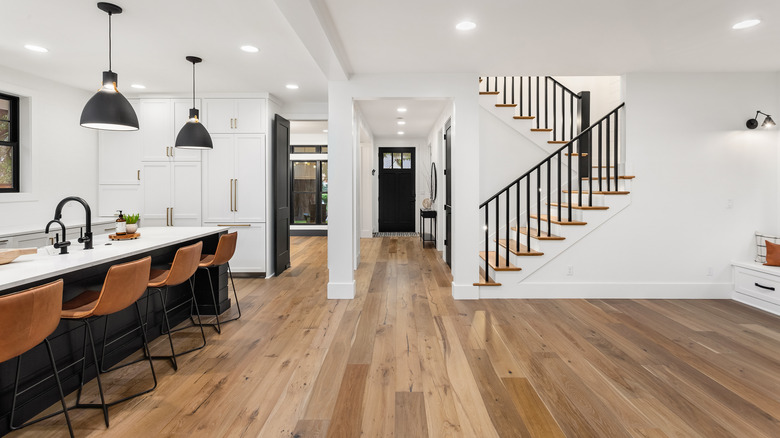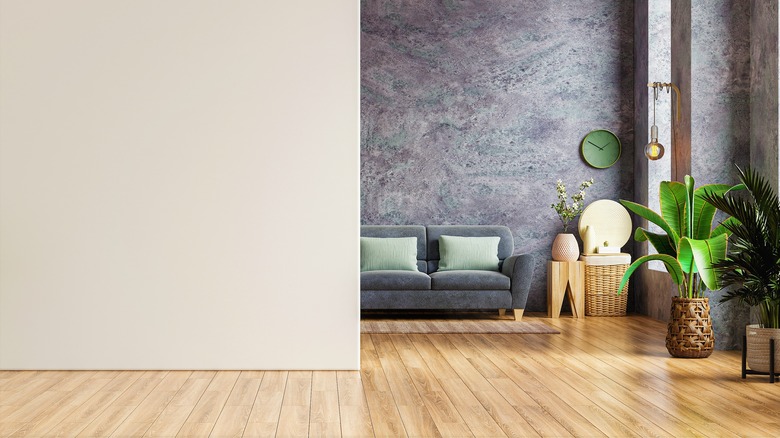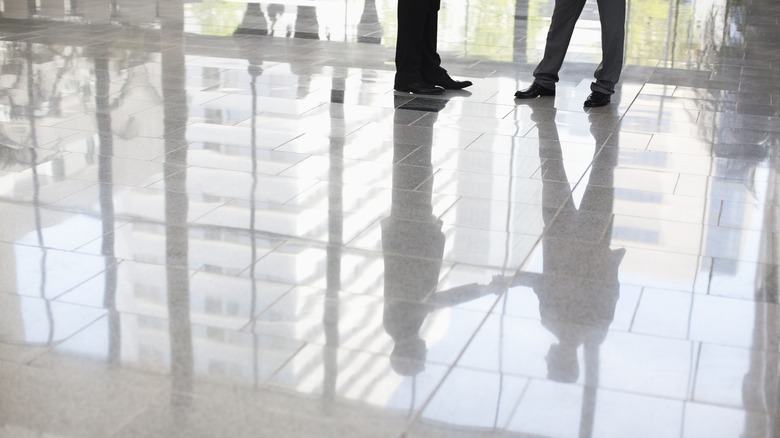Here's How You Can Make Your Floors Less Slippery With Different Finishes
Slippery floors are a common hazard in both homes and workplaces, posing a threat to safety. Whether it's an accidental spill, over-waxed tiles, or just the inherent slickness of certain floor materials, you know it's a risk that needs addressing. Understanding and mitigating this risk should become your priority, ensuring every step you take is as safe as possible. With the wrong type of finish or a lack of preventative measures, smooth, shiny floors can quickly become a slipping hazard, particularly in high-traffic or moisture-prone areas like kitchens and bathrooms. But don't worry; it is possible to retain the beauty of your flooring while also enhancing its safety.
Firstly, it helps to know your floor's finishes, be it lacquer or oil. Depending on the type of flooring in your home (whether wood, tile, concrete, or vinyl), this will further help you understand the different finishes that can be applied to increase the traction and safety of your floors. Along with choosing appropriate floor finishes, you can use various other safety methods to contribute to a safer and more slip-resistant environment in your home. Let's delve deeper into these solutions to understand how they can make your floors less slippery.
Making wooden floors less slippery
Lacquer, wax, and oil finishes offer distinct benefits for wood floors, adding beauty and practicality. Lacquer finishes accentuate the natural beauty of wood, but they're not scratch and spill resistant and do little to curb slip and falls. On the other hand, oil finishes, such as tung oil, seep into the wood, highlighting its grain and giving it a warm, natural look. Besides their aesthetic appeal, oil finishes provide a good grip, making the wood less slippery.
Another option for wood floors is to use a non-slip wood coating. These specially formulated finishes contain additives that create a subtle texture on the surface, increasing the floor's grip. It's vital to ensure that the coating you choose is suitable for your type of wood to avoid any potential damage or discoloration. Applying multiple thin coats instead of a single thick one often gives a better result.
Like wood, tiled floors can benefit from an anti-slip tile treatment. However, concrete floors are happy with epoxy coatings. Add a rock salt finish or anti-slip aggregates such as sand or aluminum oxide to increase slip resistance to the epoxy. This creates a textured surface that provides excellent traction without compromising concrete's robust and industrial look.
For vinyl floors, use a specific anti-slip vinyl floor finish. These finishes not only enhance the slip resistance of your vinyl floors but also provide an added layer of protection against wear and tear.
Other ways to make floors less slippery
Start with regular cleaning. Dust, dirt, and spills can contribute to a slippery surface. Sweep your floors daily and mop them regularly using a mild detergent suitable for your floor type. Always make sure to clean up spills immediately to prevent slips and falls. Next, consider using rugs or mats in high-traffic areas or places prone to spills, like the kitchen or bathroom. Opt for those with non-slip backing to secure them firmly on the floor. Not only do they offer added slip protection, but they also provide an opportunity to enhance your room's décor. It helps to be cautious about how much wax you use on your floors. Overwaxing can make floors very slippery. Further, ensure that your areas are well-lit. Poor lighting conditions can prevent you from noticing a potential slip hazard.
Investing in non-slip footwear can also be effective, especially on slippery surfaces like tiles or polished wood. Choose shoes with rubber soles for the best traction. You might consider using anti-slip tapes or treads in certain spaces, like stairs or outdoor areas. These tapes, designed with a textured surface, offer excellent grip, reducing the risk of slipping. They are especially beneficial in potentially hazardous areas such as stairs, ramps, or wet spaces, providing reliable, easy-to-install slip resistance.


